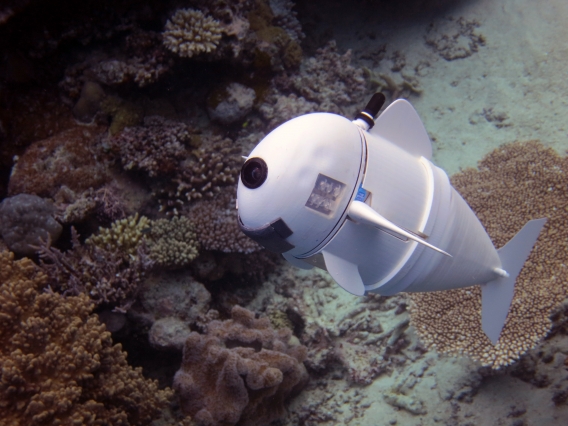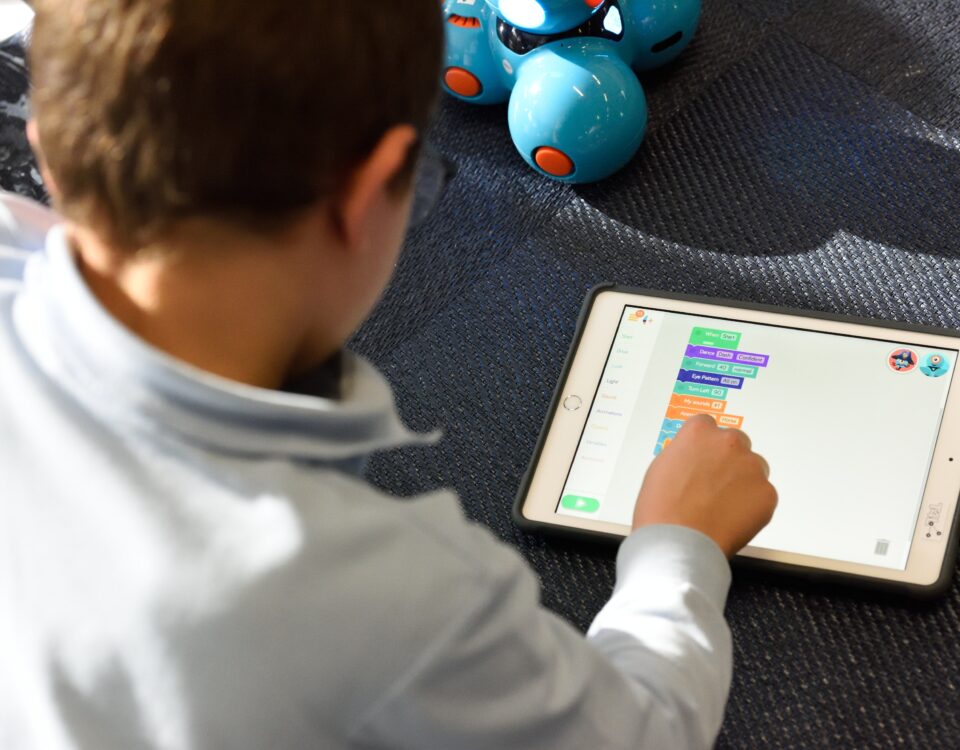SoFi Fish
From past many years, MIT Scientist have been trying really hard to study the marine world. During this period, they faced many challenges but they successfully created a silicon remote-controlled, biomimetic robotic fish. Most advanced SoFi robotic fish ever built.
A robotic fish made of silicon rubber which is short, 18.5 inches long from snout to tail and weight about 3.5 pounds. It can swam at depths of more than 50 feet for about 40 mins. The best part about this fish is it can swim among real fish in coral reefs and around the ocean. This fish has a high-resolution built in camera for photos and video known as fisheye lens, which could get close to the ocean’s inhabitants. It gives the better insight of the sea creatures. Scientists has built this robot in such a way that they can study aquatic/marine life in brief.
This Robotic SoFi Fish is a light-weight fish. It engages a simpler setup. A simple motor inside the robot enables the swimming action. The hydraulic system inside the robot is responsible for the varying speeds during swimming. This robot is successful in the field of underwater but it requires some more improvements, to make it work efficiently.
Robert Katzschmann a Ph.D. candidate at MIT’s Computer Science & Artificial Intelligence Lab and his colleagues explained to NU Sci that one of the biggest challenges for them was:
- to get it to swim faster
- to perform proper turning motion and swim at different depths
- Waterproof, structurally sound, and controllable
Robert Katzschmann and his team found difficulties in creating this fish. A hydraulic propulsion system that could carry the weight of the fish. Underwater vehicles used jet-based propellers which created turbulence, scaring away ocean life and preventing them from close-up observation. The researcher at MIT’s tackled these obstacles by using a soft robotic fish tail as the propeller. The fish tail creates less noise and turbulence than previous attempts.
Creating an efficient and successful method of underwater communication with the robot was also challenging. Radio frequency communications dissolve quickly in saltwater. Optical communications similarly scatter in the ocean. Therefore, the researchers relied on acoustic communications. Using acoustic signals, a human diver can provide intricate navigational commands to SoFi from a distance. It can dive up to 15 metres and uses soft robotics to pump water through its body to propel itself forward.
Once Robert Katzschmann quoted that : “For a long periods of time, This is the first robotic fish that can swim in three dimensions. We are excited to use this system as a closer to marine life than humans can get on their own.”
Reason behind it’s Invention?
As climate change, scientists are willing to study marine life in details. Human scuba-diving doesn’t really help them to study the marine life. It is difficult to watch some animals from closer. SoFi Fish could act as marine biologists’ unobtrusive eyes and ears.
Joseph DelPreto said that :- “When we were designing the robot, we tried to make sure that it’s moving to conserve the life that we’re trying to observe.” The best part about this fish is it’s waterproofed game controller therefore it can communicates with the robot ultrasonically. This robotic fish is able to translate high level directional commands into 3D trajectories which can be executed. The battery life of this robotic fish is of 40 minutes, which is perfect as compare to human scuba-diver because most human divers doesn’t spend more than an hour in underwater.
How this Fish Works
SoFi Fish mostly moves like a real fish, as a result the first thing to notice about it is tetherless and smooth motion. Researcher said that “it has few on-board sensors for perception, a servo motor and the same lithium polymer battery that is also found in consumer smartphones.” It has a motor in its tails that pumps water into two balloon-like chambers. As one chamber expands, it bends and flexes to one side. When the actuators push water to the other channel, that one bends and flexes in the other direction.
Primary propulsion comes from the tail, which is actuated at between 0.9 and 1.4 hertz by pumping oil into one side of the tail and then the other to make it flex back and forth, giving it a top speed of 21.7 cm per second. By changing the proportion of oil that gets pumped into each side, the tail can be made to flex more either to the left or the right, causing SoFi to turn. Dive planes and a piston displacement buoyancy control system keep the fish stable. It can dive to over 18 meters.
SoFi fish was taken to the Fiji that offers numerous coral reef environments with varying tidal conditions. It allows them to be evaluate in real-world conditions where the interactions of marine life and coral reefs can be studied. Fiji diving is world-class diving in the world with various kind of species. It can captures high-resolution photos and videos by using a fisheye lens. This can help the researcher to explore the reef more closely. It is the upgraded version of the robotic fish. It can get closer, is more safe for the reef as it is accepted by the marine species.”
Best thing about Sofi Fish
Scientist has been developing the robot fish for years. One was developed in 2014, which was not successful. The entire back half of the SoFi fish is made of silicone rubber and flexible plastic. Including the head, the components of this fish are 3D-print. MIT filled the head with baby oil to reduce the chance of water leaking. These actions help the SoFi fish mimic how real fish swim.
What’s Next after SoFi Fish?
The researcher want to boost speed of the SoFi fish, they want to study marine life over a long periods of time. They want to observe and see if it can be used to influence the behaviour of marine life and create robot to swarms. Robert Katzschmann highlighted that “We view SoFi as a first step toward developing almost an underwater observatory of sorts. It has the potential to be a new type of tool for ocean exploration and to open up new avenues for uncovering the mysteries of marine life.”
Conclusion:
In this fast growing digital world robotics is growing in all the fields. Researchers use it to study the marine life. Robotics is now an up-growing field which needs to be educated among the young generations. Young age group kids should realise the importance of education. Educating kids about the fast growing technology in a right way is useful and important. Most popular field is Robotics.
In Melbourne there are many robotics education center. Each one excels in their own way. One such is the Aerobotics Global, which the most outstanding robotics education center for young kids. We employ the most skilled and experienced staff. Aerobotics Global has brought out colourful results in the recent robotics competitions. We encourage our students to think out of the box, try different methods, apply learning to a real-life scenario. Our course structure is full of fun and gets students to fall in love with innovation.




